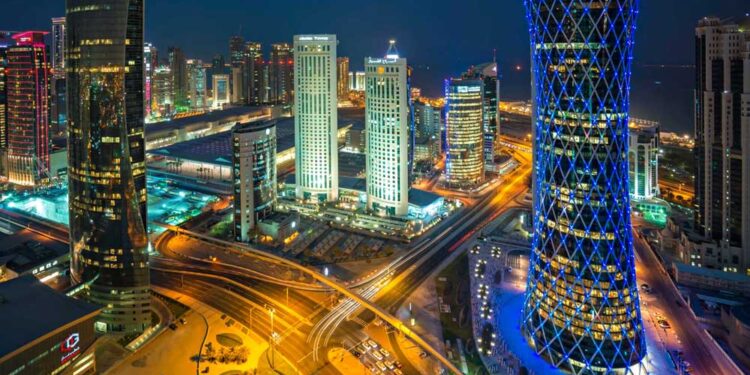A report released by the International Monetary Fund presents a projection of growth for the economy of the Arab country, mainly based on public investments, strong tourism, and the increase in natural gas production.
Qatar achieved a growth of 1.7% last year and is expected to grow by 2.4% this year, supported by public investment, spillovers from the liquefied natural gas (LNG) expansion project, and strong tourism. These projections are in a report released on Tuesday (11) by the International Monetary Fund (IMF) and refer to real gross domestic product, meaning inflation is accounted for.
“Growth normalization after the 2022 FIFA World Cup continued, with signs of strengthening activities more recently,” reported the IMF Executive Board. The Arab country hosted the global competition of the International Federation of Association Football (FIFA) about two and a half years ago, bringing positive impacts to the economy and giving visibility to the country worldwide, which also encouraged tourism to Qatar.
The IMF expects medium-term growth to accelerate to 4,75% on average, boosted by the significant LNG production expansion and initial gains from implementing reforms guided by the Third National Development Strategy (NDS3). The NDS3 is a new phase of the development strategy pursued by the government of the Arab country.
The fund says the NDS3 is aimed at building a more diversified, knowledge-based and private sector-driven economy. Guided by it, reform momentum has strengthened to attract and retain high-skilled expatriate workers, foster innovation, promote public-private partnerships, and further improve the business efficiency. “Qatar is well positioned to leverage digitalization and AI for productivity gains, and the nation’s climate agenda is advancing,” the report says.
The projections for inflation this year are favorable, at 1.4%. Last year, prices rose by 1% in the Arab country, but in previous years, inflation was higher—at 2.3% in 2021, 5% in 2022, and 3% in 2023, according to the IMF. The fund says that headline inflation will likely converge to around 2% over the medium term.
With lower hydrocarbon prices, both the current account and fiscal surpluses narrowed in 2023. The twin surpluses moderated further in 2024. Over the medium, as Qatar’s LNG production expands massively, both the current and fiscal accounts will likely remain in surpluses, albeit declining as a share of GDP, as hydrocarbon prices are projected to fall.
Resilience
The IMF Executive Directors welcomed Qatar’s continued resilience to external shocks and its favorable medium-term outlook, driven by significant increases in LNG production and the reforms under the NDS3. Directors commended the authorities’ commitment to continued fiscal prudence and called for accelerating fiscal reforms.
(Brazil-Arab News Agency)























































